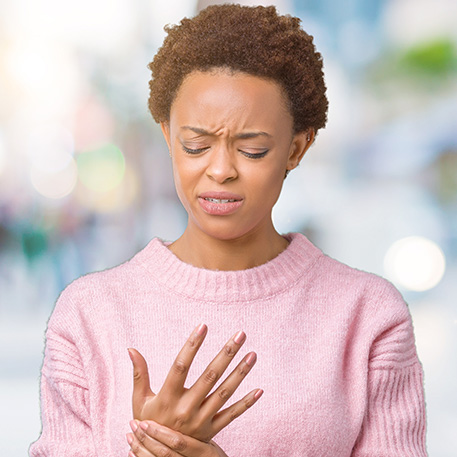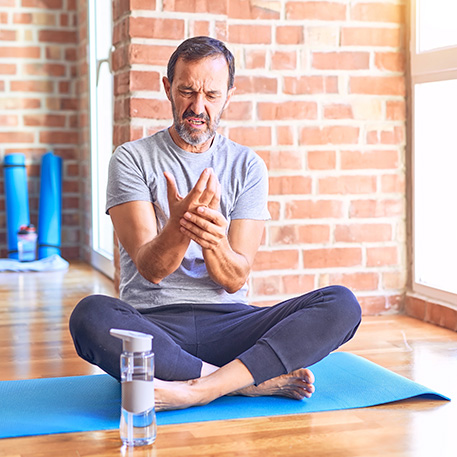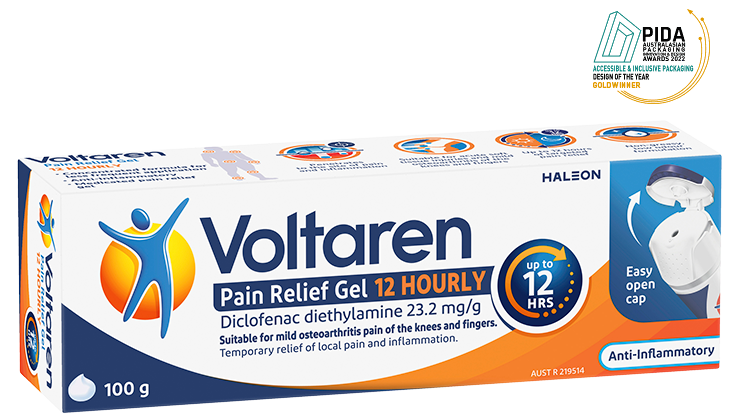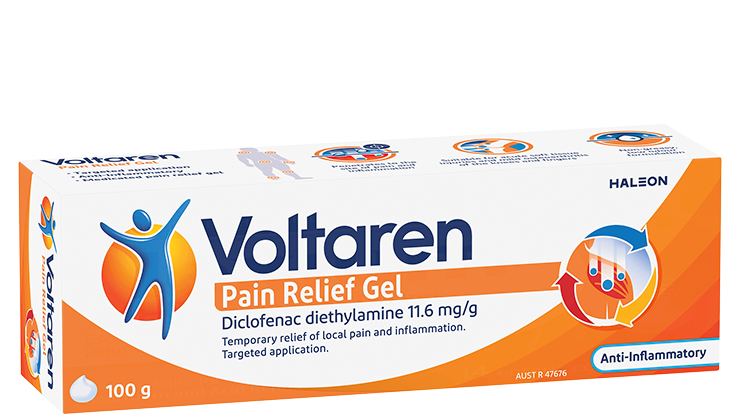Typing, stirring, carrying, opening, holding – all of it can be made painfully difficult when confronted with both wrist pain and hand pain. Getting through the most everyday tasks often does not mesh well with wrist pain. The first step to managing wrist and hand pain is ...understanding possible wrist pain causes and hand pain causes. Here we outline what you need to know about pain and what you can do about it so you can get back to writing that email, stirring that stew, and ripping open that package without a second thought.
Wrist pain is often caused by sprains or fractures from injuries, but it can also be caused by repetitive stress. In other cases, wrist pain can be caused by long-term conditions like arthritis or gout.
Hand pain, like wrist pain, can be caused by trauma, infection, or inflammation in the nerves, ligaments, or bones in the hand, and can even be a symptom of a wrist injury.

Wrist pain can sometimes go hand in hand (see what we did there?) with hand pain because the nerves that control your hand pass through your wrist and the motor function of your wrist (or lack thereof) affects the muscles in your hand. Wrist pain symptoms therefore contain what might seem like mere hand pain symptoms, but the two can be closely related.
Wrist and hand pain symptoms can include:1
- swollen fingers
- difficulty making a fist or gripping objects
- numbness or tingling sensation in the hands
- pain, numbness, or tingling that gets worse at night
- sudden, sharp pain in the hand
- swelling or redness around the wrist
- warmth in a joint near the wrist
While not all wrist and hand pain require medical care, some wrist and hand pain symptoms are more worrisome than others. See a doctor about the following severe wrist pain symptoms:
- Inability to move your wrist at all
- Warmth and redness in your wrist joint accompanied by fever over 37.8 °C
- Misshapen or abnormal looking hand
Causes of wrist pain
What causes wrist pain? Wrist and hand pain can be caused by damage to any part of your wrist.
These can result from fractures to sprains to bruising. Tendonitis can also affect your wrists. If you’ve had trauma or blunt impact to your wrist followed by bruising, swelling, and disfiguration, you may have injured your wrist.

- Injury or trauma
Bending a finger backwards or closing your hand in a door are examples of trauma or injury that can cause finger or hand pain. In these cases, you may experience bruising, swelling, or disfiguration in your hand or finger.
If you cannot move your finger or hand, you have a broken bone. If so, see a healthcare professional who will help splint your hand or finger to keep it immobilized while it heals.
- Circulatory problems
Poor circulation can cause pain in the hands or fingers. This happens because your circulatory system may have a hard time getting sufficient blood flow to your extremities.
- Osteoarthritis
Osteoarthritis is also common in the fingers, and alongside painful flareups it can also cause bony nodules or nodes to form at either of the two joints along your finger. See more about managing osteoarthritis pain.
Lifestyle causes of wrist pain and hand pain
Wrist pain and hand pain causes can be linked to your lifestyle. Anything that you do on a habitual basis with your wrists or hands can be a significant risk factor for wrist and hand pain. For instance, long hours of typing at a computer.
Lifestyle risk factors for wrist and hand pain include:2

- Repetitive work
Any repetitive motion of the hands or wrists can put you at risk for wrist pain – think cutting hair or even knitting. Sitting at a desk typing or tapping away at your mobile all hours of the day are a way of life for most of us. However, these repetitive motions can be the culprit in our wrist and hand pain. Computer wrist pain is common. It can be caused by excessive typing.
- Strengthen your bones
The stronger your bones, the harder they are to break. This means that if you do happen to take a nasty spill, your bones have a higher chance of coming out of the ordeal unscathed. Getting enough calcium in your diet is a good way of maintaining bone strength. Our bodies do not produce calcium, which means we need to get it from our diet.4
- Avoid falls
When we fall, we often use our hands to break the impact of hitting the ground. Falling on an outstretched hand is one of the most common causes of wrist injury.5 Try as best you can to avoid falls to avoid wrist injury. This can mean performing balance exercises that strengthen your core (such as the Bird Dog) or wearing proper footwear.
- Go ergonomic
Repetitive motions are unavoidable for many of us. Consider the hairdresser wielding scissors all day, the seamstress plying his needle for hours, or, as is the case for so many, the office worker typing away at a computer for hours. Try to use ergonomic practices to minimize the stress on your hands from repetitive motions over time. Keep your wrists in a neutral, relaxed position, and take regular breaks.
- Protect yourself during sports
Falls and blunt force are a near inevitable part of participating in sports, especially contact sports. However, even sports like biking or running can leave you bruised after a fall. Wear protective gear like wrist guards and gloves to protect yourself in case you do indeed fall. Always make sure to stretch before exercise in order to improve flexibility and hopefully prevent a fall in the first place.
Explore Voltaren’s products for pain relief
Health, wellness & your pain
Pain is rarely just physical nor is it always solved by taking medicine alone. Voltaren is your ally in helping you take more control of your pain journey, from the way you sleep, to what you eat, mental wellbeing and complementary pain relief therapies.












